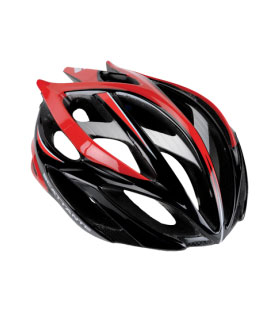
- Afrikaans
- Albanian
- Amharic
- Arabic
- Armenian
- Azerbaijani
- Basque
- Belarusian
- Bengali
- Bosnian
- Bulgarian
- Catalan
- Cebuano
- Corsican
- Croatian
- Czech
- Danish
- Dutch
- English
- Esperanto
- Estonian
- Finnish
- French
- Frisian
- Galician
- Georgian
- German
- Greek
- Gujarati
- Haitian Creole
- hausa
- hawaiian
- Hebrew
- Hindi
- Miao
- Hungarian
- Icelandic
- igbo
- Indonesian
- irish
- Italian
- Japanese
- Javanese
- Kannada
- kazakh
- Khmer
- Rwandese
- Korean
- Kurdish
- Kyrgyz
- Lao
- Latin
- Latvian
- Lithuanian
- Luxembourgish
- Macedonian
- Malgashi
- Malay
- Malayalam
- Maltese
- Maori
- Marathi
- Mongolian
- Myanmar
- Nepali
- Norwegian
- Norwegian
- Occitan
- Pashto
- Persian
- Polish
- Portuguese
- Punjabi
- Romanian
- Russian
- Samoan
- Scottish Gaelic
- Serbian
- Sesotho
- Shona
- Sindhi
- Sinhala
- Slovak
- Slovenian
- Somali
- Spanish
- Sundanese
- Swahili
- Swedish
- Tagalog
- Tajik
- Tamil
- Tatar
- Telugu
- Thai
- Turkish
- Turkmen
- Ukrainian
- Urdu
- Uighur
- Uzbek
- Vietnamese
- Welsh
- Bantu
- Yiddish
- Yoruba
- Zulu
Dec . 02, 2024 06:31 Back to list
bluetooth mountain bike shifter
The Future of Cycling Bluetooth Mountain Bike Shifters
In recent years, the world of mountain biking has seen significant advancements in technology, with one of the most exciting developments being the introduction of Bluetooth mountain bike shifters. These innovative devices are transforming the way cyclists interact with their bikes, enhancing the overall riding experience, and pushing the boundaries of performance. In this article, we'll explore the advantages of Bluetooth shifters, how they work, and what the future may hold for this emerging technology.
What Are Bluetooth Mountain Bike Shifters?
At their core, Bluetooth mountain bike shifters are electronic gear-shifting systems that utilize wireless technology to control the bike’s drivetrain. Unlike traditional shifters that rely on cables and mechanical components, Bluetooth shifters operate using electronic signals sent from a remote control or integrated handlebar buttons to the derailleur. This system allows for seamless and precise gear changes, eliminating the need for manual adjustments that can be cumbersome and less reliable.
Advantages of Bluetooth Shifters
1. Precision and Consistency One of the most compelling features of Bluetooth shifters is their precision. Using electronic signals allows for quick and accurate shifts, even under load. Riders can experience smoother gear transitions while climbing steep hills or navigating technical trails. This consistency can lead to better control and confidence on the bike.
2. Customization Most Bluetooth shifters come equipped with software that allows riders to customize their shifting preferences. This includes adjusting the sensitivity of shifts, programming shift patterns, and even creating profiles for different riding conditions. This level of personalization ensures that each rider can tailor their setup to suit their unique style and preferences.
3. Reduced Maintenance Traditional shifters require frequent adjustments and maintenance to account for cable stretch, dirt buildup, and wear and tear. Bluetooth shifters, however, have fewer moving parts and do not rely on cables that can fray or become misaligned. This means less time spent on maintenance and more time riding.
4. Lightweight and Sleek Design Inventors of Bluetooth shifters have ingeniously designed them to be lightweight and compact. The elimination of bulky cable systems reduces overall bike weight, which is crucial for mountain bikers who often seek a performance edge on challenging terrains.
bluetooth mountain bike shifter

How Do They Work?
Bluetooth shifters use a combination of electronic components and sensors to function. Riders typically press a button on their handlebars to send a signal to the derailleur. The derailleur then moves the chain to the desired gear with impressive speed and accuracy. The integration of sensors allows for real-time feedback on gear selection, battery levels, and even shift performance via connected applications on smartphones.
These shifters can also connect with other bike components, such as power meters and bike computers, creating a fully integrated riding ecosystem. This versatility enhances a rider’s understanding of their performance metrics, enabling better training and riding decisions.
The Future of Bluetooth Shifting Technology
As technology continues to advance, we can expect Bluetooth mountain bike shifters to evolve even further. Potential improvements may include longer battery life, faster shifting speeds, and enhanced connectivity with other cycling devices. Furthermore, the integration of artificial intelligence could lead to shifters that learn a rider's habits and optimize shifting patterns accordingly, making for an even more intuitive experience.
Additionally, as the popularity of e-bikes rises, Bluetooth shifting technology could become a standard feature, enhancing the capabilities of these electric mountain bikes. This could open up new possibilities for trail riding, racing, and even bike touring.
Conclusion
Bluetooth mountain bike shifters represent a significant leap forward in cycling technology. Offering riders precision, customization, and reduced maintenance, they are truly altering the landscape of mountain biking. As we look to the future, it is clear that electronic shifting systems will continue to evolve, providing cyclists with the tools they need to enhance their performance and riding enjoyment. Whether you're a seasoned mountain biker or a newcomer to the sport, embracing this technology may well be the key to unlocking new levels of adventure and excitement on the trails.
-
The Ultimate Kids' Four-Wheeler Experience
NewsJul.09,2025
-
The Ultimate Guide to Mountain Bikes: Gear Up for Your Ride
NewsJul.09,2025
-
The New Age of Cycling: Electric Bikes for Every Rider
NewsJul.09,2025
-
The Best Kids Bicycles: Ride in Style and Safety
NewsJul.09,2025
-
The Best 3-Wheel Scooters for Kids: Fun, Safety, and Adventure
NewsJul.09,2025
-
Revolutionize Your Ride: Affordable Electric Bikes
NewsJul.09,2025
-
Finding the Perfect Mountain Bike for Every Rider
NewsJul.09,2025



